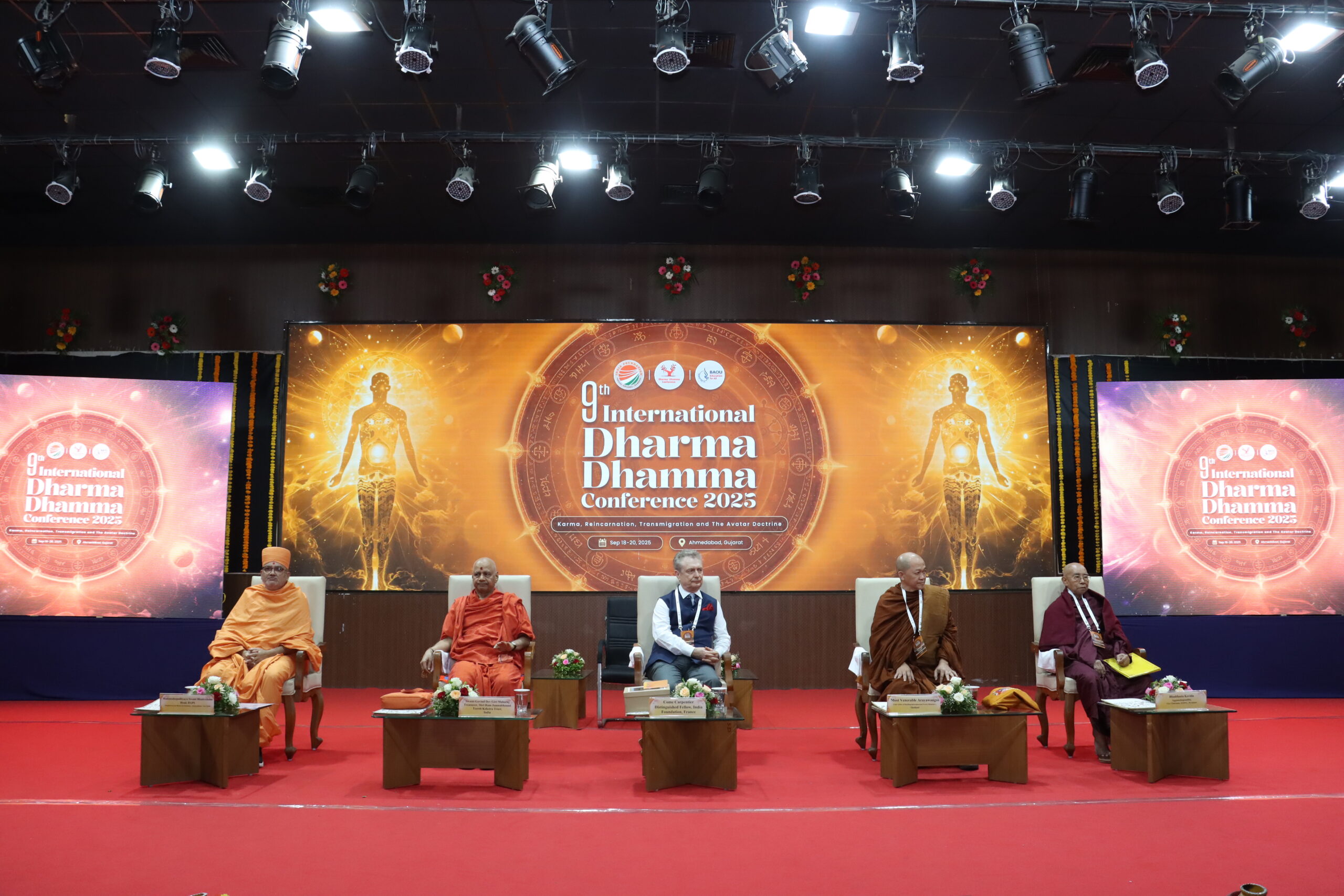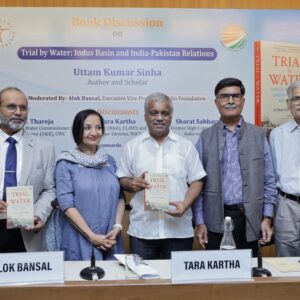As an intellectual fountainhead and founder of what is termed as “Hindu nationalism,” Vinayak Damodar Savarkar has emerged as one of the most controversial Indian political thinkers of the 20th Century. His writings on Hindutva have generated a great deal of attention for long and he has been eulogized and demonized in equal meausre for being the ideologue of Hindutva. In this paper, I explore the role and contribution of Savarkar as a revolutionary figure and briefly interpret the impact of his philosophy and writings on India’s revolutionary movement. The interpretations that we have had of Indian revolutionary thought are situated almost always within a Western Marxist lineage. Hence it becomes difficult for historians to accept that Savarkar was both a revolutionary and someone who also contributed to the making of a revolutionary thought. It would not be, in my opinion, an exaggeration to state that any history of revolutionary thought in early twentieth century India must examine the role of Savarkar’s works. Savarkar’s revolutionary inspiration was Italian political theorist Guiseppe Mazzini, rather than Karl Marx and other thinkers of the Marxist ideology. Savarkar used history as a tool and believed in writing about the contributions of past revolutionaries to stir and motivate individuals into armed fight against colonial injustices. He never wielded a weapon himself, but argued instead that writing histories was a necessary step in overthrowing colonial empires.
The important platform for pan-India anti-colonial voice had been the Indian National Congress, founded in 1885. But by the time of 1905 and the proposed Partition of Bengal, we see a distinct schism develop within the Congress wherein several nationalist leaders were becoming increasingly impatient with the attitude and responses of the Congress to the colonial power.
I argue here that the roots of this division in ideology could be traced back to the 1857 uprising, after which a diverse group comprising intellectuals, poets, mystics, philosophers, novelists, reformers, and spiritual leaders from around the country cultivated a distinctly Hindu anti-colonial nationalist discourse that combined inward spiritual development with external political freedom. This ideology emerged from the angst that despite her ancient culture and civilization, India had allowed herself to be defeated by a foreign country with a far inferior civilization. The spread of western attitudes among the small but growing middle class in urban colonial India only made matters more urgent. Mythological and historical imageries gave inspiration-‐ be it, an exiled ruler like Lord Rama, a teacher of duty like Lord Krishna, the heroic guerilla chieftain Chhatrapati Shivaji who conquered the might of the Mughals; and to this was added the symbolism of the India as a chained and captive mother beseeching her young sons to rescue her. These powerful iconographies inspired an entire generation of Indians into action.
The moderates under leaders such as Gopalkrishna Gokhale favoured a regionally restricted peaceful protest and talks, to resolve colonial domination of India. This was stoutly opposed by the ‘extremists’ such as Lala Lajpat Rai, Bipin Chandra Pal and Bal Gangadhar Tilak, who denounced the Bengal partition in the strongest terms and spearheaded the nationwide Swadeshi or self-rule movement. Savarkar was a young undergraduate law student then and had come to the attention of the nationalists, especially Bal Gangadhar Tilak who considered Savarkar as his protégé, with his fiery speeches against partition. His affiliation with the extreme wing of nationalists was apparent even from his school days when, after being deeply affected by the execution of the Chapekar Brothers of Poona for assassinating British officials, he organized a secret revolutionary society called Rashtrabhakta Samuha, which later became the ‘Mitra Mela’ or the society of Friends in 1901 in his home town Nasik. There arefew original documents concerning this society because the members destroyed them all to prevent them falling into the hands of the British.
Savarkar believed in turning history and historical words into a tool or political weapon. He insisted that members of the Mitra Mela read works dealing with major historical figures, biographies of Mazzini, Garibaldi, Napoleon
Bonaparte. His dream was to produce an Indian nationalist, even among the villagers, who had a historical and revolutionary consciousness that was educated and inspired by these global revolutionary leaders.
Tilak recommended Savarkar’s name to that great colossus for all young Indian nationalists, Shyamji Krishna Varma, who gave scholarships to Indian students involved in revolutionary activities, to come and study in Europe. Shyamji had founded a monthly called the Indian Sociologist in 1905 that produced critical essays on the colonial government of India. He owned a house in Highgate called India House, which became a hostel of sorts for Indian students and turned into the hotbed for young Indian revolutionaries, many of whom were inspired by the movements taking place in Russia, Italy and other parts of Europe. The India House became a confluence of several leaders of the times which included, along with Savarkar, stalwarts such as Bhai Paramananda, Lala Hardayal, Virendranath Chattopadhyay, VVS Aiyar, Gyanchand Varma, Madame Bhikaji Cama, P.M. Bapat (Senapati), PT Acharya, WV Phadke, Madanlal Dhingra, Dr Rajan, KVR Swami, Shukla, Sukhsagar Dutta, Sikandar Hyat Khan, Asaf Ali, Khan of Nabha etc. 1 They held weekly meetings and celebrated anniversaries of great Indian heroes. The Scotland Yard that tracked their every movement within and outside London placed these young students under intense surveillance. 2
It was in 1906, that Savarkar left for London and immediately got involved in anti-colonial revolutionary activities from there. He worked with Shyamji Krishnavarma and other students to form a secret underground revolutionary society called the ‘Abhinav Bharat Society’. All members were required to take an oath declaring their personal commitment to the revolutionary objectives of the Society:
1 See Dhananjay Keer, Veer Savarkar
2 Detailed account of the surveillance of Indian revolutionaries is given by Richard Popplewell (1988), The Surveillance of Indian revolutionaries in GreatBritain and on the Continent, 1905–14, Intelligence and National Security, 3:1, 56-‐76,
I solemnly and sincerely swear that I shall from this moment do everything in my power to fight for independence…convinced that swarajya can never be attained except by the waging of a bloody and relentless war against the foreigner…and with this object, I join the Abhinav Bharat, the revolutionary society for all Hindustan.3
Within six months of reaching London, he translated Mazzini’s biography to Marathi. Over the next two years from 1908 to 1909, he completed his own monumental and meticulously researched history from the British Library archives of original East India Company documents, on the 1857 uprising terming it as “India’s First War of Independence.” He dismissed all the colonial arguments about the causes of 1857 of English historians of the greased cartridges, the economic motives of the elite or the doctrine of lapse etc. and instead powerfully argued that a nationalist ideology was what motivated the uprising and that it led to the end of Hindu-Muslim enmity towards achievement of a common cause. “Can any sane man,” he asked, “maintain that an all embracing Revolution could have taken place without a principle to move it? Could the vast tidal wave from Peshawar to Calcutta have risen in blood without a fixed intention of throwing something by means of its force.”4 He writes about revolutions in general, thus:
Every revolution must have a fundamental principle…A revolutionary movement cannot be based on a flimsy and momentary grievance. It is always due to some all-‐moving principle for which hundreds and thousands of men fight… The moving spirits of revolutions are deemed holy or unholy in proportion as the principle underlying them is beneficial or wicked…In history, the deeds of an individual or nation are judged by the character of the motive . . . To write a full history of a revolution means necessarily the tracing of all the events of that revolution back to their source-‐ “the motive”.5
3 Vinayak Chaturvedi (2013) A Revolutionary’s Biography: The Case of V DSavarkar, Postcolonial Studies, 16.2, p 128.
4 Savarkar,The Indian War of Independence(1909), p 3. 5 Ibid.p 4.
The ‘motives’ for Savarkar that he describes above, rested on the dual principles of swarajya and swadharma, which he defines as the love of one’s country and the love of one’s religion, respectively. For him, these were the quintessential guiding principles for all revolutionaries, both in India and outside, and believed that without these principles a true revolution was not possible or feasible. The book did not call for widespread revolution, mayhem, or anarchist violence in India. He was not a reckless revolutionary, but a strategist who advised his followers to strike when the iron is hot. Savarkar, instead, intended to give India a history of her own, to change the subject of history from the colonial state to a national state. In his introduction to the book he made clear that ‘history’ did important work for a nation and a national community, as he recognized it had done for England. He was going to do the same for India, by challenging the popular English accounts of our history. An informant leaked themanuscript of this book to Scotland Yard, and the work was banned before it was even published. It was perhaps one of the only literary works of the world to have this rare distinction of being proscribed even before it was published!
It was Savarkar’s intellectual output on revolutions and his philosophy that scared the British Government a lot more than his actual revolutionary acts, which were significant, but not as much as is made of them. Even as Savarkar was engaged in reading or smuggling bomb-making manuals and guns into India, his literary output and consequent ideological reach were much more dangerous. His associates Madame Bhikaji Cama and Sardar Singh Rana were sent by him to represent India at the International Socialist Congress held on 22 August 1907 at Stuttgart in Germany. They unfurled the Indian flag of independence designed by Savarkar and wanted to move a resolution declaring British rule, as disastrous but could not. But Cama’s speech was fiery and she made a passionate case for freeing India.6 Total freedom is what they postulated and no collaborations negotiations etc as the moderates wanted. Savarkar dispatched members of the Abhinav Bharat from India House to Paris to learn about bomb making, and while he had grandiose plans for sending some members to Belgium, Switzerland and Germany for military training, they never
6 For details of all these revolutionary activities see Dhananjay Keer, VeerSavarkar
materialized. He did, however, make copies of bomb manuals, which he sent to India, along with a few pistols for political assassinations. These were used by several revolutionaries such as Khudiram Bose, Prafulla Chakravarti, Kanailal Dutt, Satyendra Bose and by a seventeen-year-old AnantKanhere to assassinate a colonial official in Nasik. When caught, Kanhere implicated, among others, the Savarkar family. As a result, Savakar’s older brother and some family friends were arrested and sentenced to transportation for life in the Andaman Islands. Savarkar’s younger brother was also arrested in connection with a different conspiracy case in the same year. Back in England, Savarkar and other members of India House were already under surveillance. Despite this, Savarkar managed to inspire Madanlal Dhingra to assassinate former Viceroy Lord Curzon, Lord Morley and British MP Lord Curzon Wyllie. He succeeded in killing Curzon Wyllie in 1909 and was put to trial and eventually hanged. In a moving article in BandeMataram that was started by Madame Cama, Lala Hardayal wrote: “In times tocome, when the British Empire in India shall have been reduced to dust and ashes, Dhingra’s monuments will adorn the squares of our chief towns, recalling to the memory of our children the noble life and noble death of one who laid down his life in a far-off land for the cause he loved so well.” 7
On 13 March 1910, Savarkar was arrested on multiple criminal charges, including ‘procuring and distributing arms’, ‘sedition’, and ‘waging war against the King Emperor of India’. The unspoken fear in all the surveillance documents is that sedition and its effects were the real threat the colonial police had to contain. In 1911, the government opted to send Savarkar to India for his trial, rather than holding it in Britain. However, when the ship carrying Savarkar temporarily docked at Marseilles, France, Savarkar attempted to escape, jumping off the ship and swimming to shore. Unfortunately he was caught due to the treachery of an insider and was eventually sent back to India, tried and later given the maximum sentence of two transportations for life to the Kala Pani Cellular Jail in Andamans, totaling 50 years! Despite passing the law examination, he was never called by the Bench to practice and his degrees were all withdrawn once he was deported to Andamans. Till his conditional release in 1924, he was put to the greatest human tortures at Kala Pani, which are
7 Dhananjay Keer, Veer Savarkar, Chapter 4
horrifying to say the least. 8
C.A. Bayly suggests that intellectuals, like Savarkar, do not really fit into neat classifications of ‘Right or Left’, which, in any case, were probably ‘anachronistic’ for this period9 . In other words, ideas were circulated and received along multiple political trajectories forming complex ‘rhizomal networks’ on a global scale.10 And, because these networks generally functioned ‘underground’ and were classified as ‘criminal’ by states and empires, fathoming the intricate connections that made up the contemporary intellectual economy is often herculean.11
Quite curiously, Savarkar wrote a biography of himself as a revolutionary, written in the pseudo-name of Chitragupta, the mythical accountant of Yamaraj the Lord of Death, entitled “Life of Barrister Savarkar”. In other words, for Savarkar, just like works such as the history of 1857 or later his seminal work, Hindu Pad Padshahi on Maratha history, writing his own biography was meant toinfluence and inspire fellow-revolutionaries. Not surprisingly, the British government immediately banned the text, stating it to be a seditious text. But the book did manage to find light of day into the hands of sympathizers across the political spectrum, though in all its multiple reprints no one ever came to know who the author was. Savarkar also chose never to make this public till the time of his death in 1966 and even after India’s independence in 1947. It was only in the 1987 edition, in the preface that it was revealed that Chitragupta was none other than Savarkar and it was the penname he used. Almost every page has a reference to him as a “leader of the revolution.”
8 See Savarkar’s My Transportation for Life for details of the tortures in the
9 Bayly, Recovering Liberties, p 311. 10 Anderson, Under Three Flags, p 4.
11 Maia Ramnath,Haj to Utopia: How the Ghadar Movement Charted Global
Radicalism and Attempted to Overthrow the British Empire, Berkeley: Universityof California Press, 2011; and Daniel Bru ̈ckenhaus, The‘ TransnationalSurveillance of Anti-‐Colonialist Movements in Western Europe, 1905-‐1945’, unpublished PhD thesis, Yale University, 201
But interestingly, Vinayak Chaturvedi mentions that in an interview in 1976, Durga Das Khanna, former Chairman of the Punjab Legislative Council and himself a revolutionary, described how when he was interviewed by Bhagat Singh and Sukhdev Thapar for admission into the Hindustan Socialist Republican Association (HSRA), he was specifically asked by Bhagat Singh if he had read this book ‘Life of Barrister Savarkar’. So it almost seemed like an entry criteria for the HSRA recruits! Bhagat Singh is supposed to have been personally influenced immensely by Savarkar’s work on the 1857 Revolution as well. Copies of the book were found with almost all the members of the Lahore Conspiracy Case in the 1930s. 12
In conclusion, Savarkar’s own words summarize his philosophy of a revolution and its objectives:
Whenever the natural process of national and political evolution is violently suppressed by the forces of wrong, then revolution must step in as a natural reaction and therefore ought to be welcomed as the only effective instrument to re-enthrone Truth and Right. You rule by bayonets and under these circumstances it is a mockery to talk of constitutional agitation when no constitution exists at all. But it would be worse than a mockery, even a crime to talk of revolution when there is a constitution that allows the fullest and freest development of a nation. Only because you deny us a gun, we pick up a pistol. Only because you deny us light, we gather in darkness to compass means to knock out the fetters that hold our Mother down.13
(This paper was presented by Dr. VikramSampath at the national seminar on ‘Revisisting Indian Independence Movement’ organised by India Foundation at New Delhi on 18th March, 2017.Dr. Vikram Sampath is a Bangalore based author/historian/political commentator, Sahitya Akademi award winner, and Founder-Director of the Archive of Indian Music and the Bangalore Literature Festival)
(This article was published in July-August 2017 issue of India Foundation Journal.)
12 Vinayak Chaturvedi (2013) A revolutionary’s biography: the case of V D Savarkar, Postcolonial Studies, 16:2, 124-‐139
13 Dhananjay Keer, Veer Savarkar, p 63
References
Bakhle, Janaki. ‘Savarkar (1883-‐1966), Sedition and Surveillance: The Rule of Law
Bayly, C .A. Recovering Liberties: Indian Thought in the Age of Liberalism and
Chaturvedi, Vinayak. (2013) “A Revolutionary’s Biography: The Case of V D
Chitragupta. Life of Barrister Savarkar. Madras: B G Paul & Company Publishers, 1926.
Keer, Dhananjay. Veer Savarkar. Bombay: Popular Prakashan, 1988.
Savarkar, Vinayak Damodar. Indian War of Independence (1909). Delhi, 1986, 10th edn.
—. My Transportation for Life, Selected Works of Veer Savarkar Vol 2, Chandigarh: Abhishek Publishers, 200



